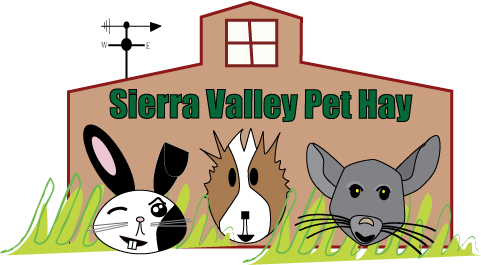PLEASE read below for more information on how our hay is grown and to find out more about the differences between 1st, 2nd, and 3rd cuttings.
1st CROP TIMOTHY HAY
This cutting produces more hay than any of the following cuttings. Its cattail seed heads, leaves and stems are larger than 2nd or 3rd cuttings. We cut our 1st crop timothy when the cattail seed heads have formed but the pollen has not formed and the plant is a little immature. This gives the hay a good balance between the roughage and the nutrition needed for your rabbits,chins guinea pigs, and other herbivores. Horse owners love this crop also.This hay while coarser than the following cuttings , will keep your animals busy wearing down their teeth and giving them something to play with.
2nd CROP TIMOTHY HAY
This cutting has fewer stems, smaller seed heads, and smaller leaves. This crop has a quarter of the tonnage per acre than the first cutting. Its overall texture is more delicate and softer than 1st crop timothy.Your animals will gain weight on this cutting because it is so easy to eat. Always remember to change hay types slowly over at least a couple of weeks.
ALFALFA
Alfalfa is different from timothy and other grasses because it is a warm weather crop. It has a much finer texture and more leaves on its 1st and last cuttings and a lot more nutrition per pound than second crop alfalfa.This cutting will have more grass in it than 2nd crop alfalfa. Because this crop has some grass your animals will like its variety. Feed this to your younger animals or those with young babies for its high protein and calcium levels.
Most the time we sell the last cutting, which is our 3rd cutting.
Note: If you know your pet is allergic to alfalfa then DO NOT FEED it.
OAT HAY
This hay is where you get your oatmeal from. The seeds are in the top of the plant with the majority of the plant having long stems. This hay is coarser than 1st crop timothy and the nutritional value is slightly lower. The hay is mostly green but starting to turn honey colored. Your rabbits, chins and guinea pigs will like finding the seeds and eating them for a change of pace. Mix it with your other hays for a little treat. This hay is good for horses when grass hay is hard to find.
Hay Information
Find out why Sierra Valley Hay is so green and packs so much more nutrients into its leaves and stems.
Also find out how our different crops vary in texture and nutrition.
ORCHARD GRASS:
This hay is a fine blade grass that is very similar to Timothy hay. It is very green with no seed stems, in the 2nd cutting which is what we sell. You can feed this to your rabbits in place of Timothy for a change.
HAY GROWS GREAT and GREEN in SIERRA VALLEY
Most hay crops grown at high altitudes in the Eastern Sierra Nevada Mountains have many of the same qualities. Most of these qualities are a result of cool night time temperatures during the growing months, low humidity, a short growing season, and limited rainfall during the harvesting of our hay crops. The cool night time temperatures and cold mornings result in less time for the plant to take all the energy it accumulated during the day and turn it into hay growth. This results in hay that is much more nutritious per inch of growth compared to climates that have warm nights. The low humidity in the Eastern Sierras is a direct result of limited rainfall year around. Typically we receive less than 15 inches of rainfall per year. With most summers having only occasional thunder storms of 1/4 of an inch or less. Many summers we do not get rain for 3-4 months, because of these dry summers we have very little dew which allows our hay to stay green (no bleaching) and dry quickly, usually 3 to 5 days.
